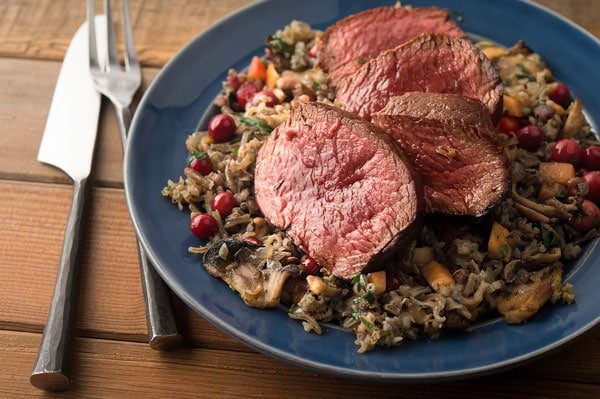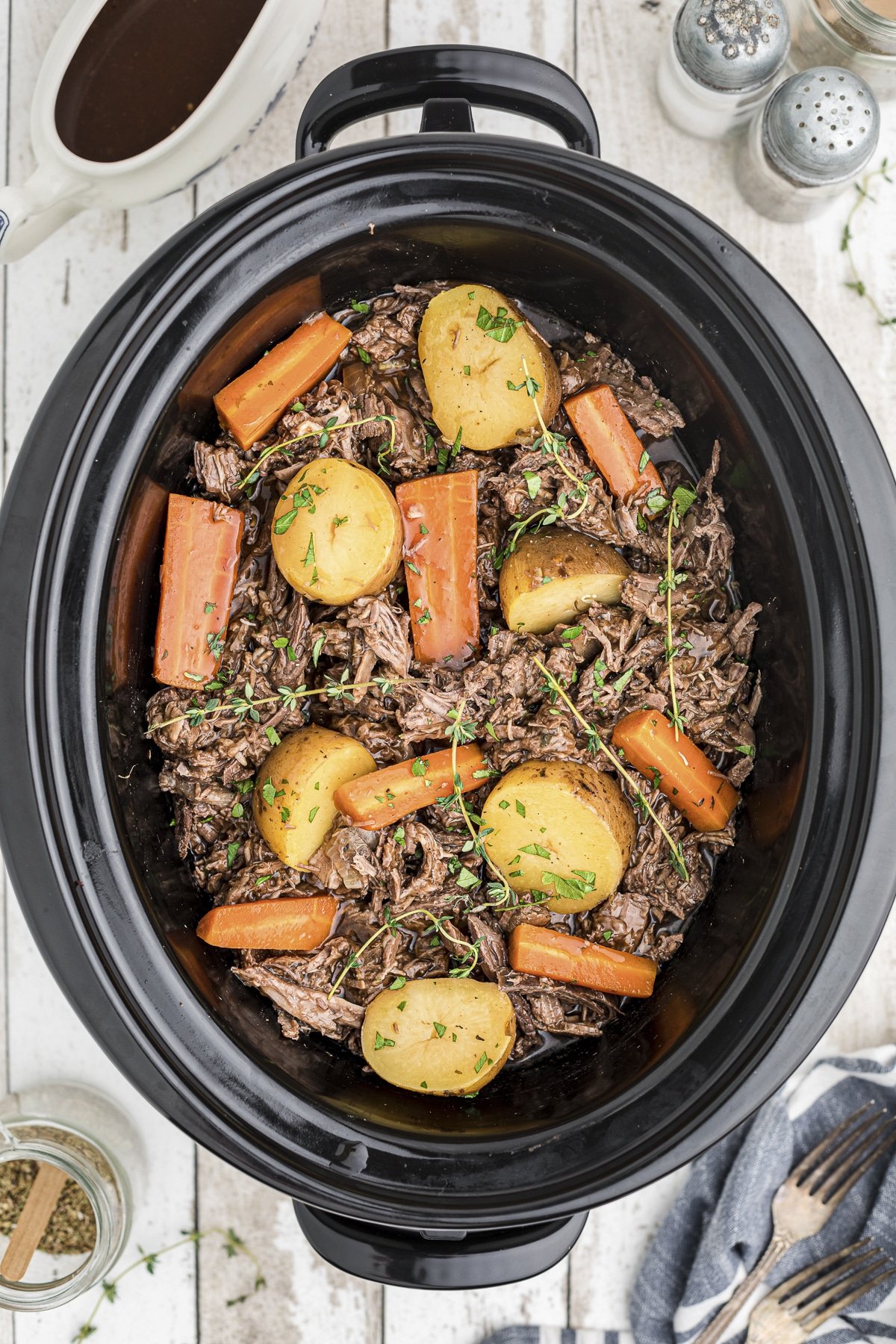
A Taste of Tradition: Crafting an Authentic Native American Venison and Wild Rice Pot Roast
The vast, untamed landscapes of North America have long been a source of sustenance and cultural richness for its Indigenous peoples. For millennia, hunting and gathering were not merely means of survival but deeply intertwined with spiritual practices, community traditions, and a profound understanding of the natural world. Among the most revered ingredients are venison, the lean and flavorful meat of deer, and wild rice, a grain that thrives in the pristine waters of lakes and rivers.
This article delves into the heart of Native American culinary heritage by exploring the creation of an authentic Venison and Wild Rice Pot Roast. More than just a recipe, this dish is a testament to resourcefulness, patience, and the art of coaxing complex flavors from simple, wholesome ingredients. It’s a meal that speaks of the land, the seasons, and the enduring spirit of Indigenous cultures.
The Significance of Venison and Wild Rice

For many Native American tribes, the deer was a sacred animal, providing not only food but also hides for clothing, bones for tools, and sinew for cordage. The hunt was often a communal effort, accompanied by rituals and prayers, ensuring respect for the animal and gratitude for its life. Venison, lean and packed with nutrients, became a staple in their diets, prepared in a myriad of ways, from jerky and pemmican to stews and roasts.
Wild rice, often referred to as "manomin" or "water oats," holds an equally significant place. Unlike cultivated rice, wild rice grows naturally in shallow, clear waters, a delicate grain harvested by paddling canoes through the paddies and gently beating the stalks to release the grains. This labor-intensive harvesting process imbues the grain with a unique story of perseverance and connection to the aquatic environment. Its nutty, earthy flavor and satisfying chewy texture make it a perfect complement to the robust taste of venison.
Reimagining an Ancestral Dish for the Modern Table
While traditional preparations might have varied across different tribes and regions, the core principles of a pot roast – slow cooking to tenderize tougher cuts of meat and meld flavors – remain constant. This recipe aims to honor those traditions while being accessible to contemporary home cooks. We’ll focus on techniques that highlight the natural flavors of the venison and wild rice, incorporating ingredients that were historically available or commonly used.
The beauty of a pot roast lies in its forgiving nature. It’s a dish that can simmer gently on the stovetop or in the oven for hours, filling your home with an irresistible aroma. The slow cooking process breaks down the connective tissues in the venison, transforming a potentially tough cut into meltingly tender morsels. The wild rice, when cooked alongside the meat, absorbs the rich savory juices, becoming plump and flavorful.
Key Elements of an Authentic Flavor Profile
To achieve an authentic Native American flavor profile, we’ll focus on a few key elements:
- The Meat: A well-marbled cut of venison shoulder or chuck roast is ideal for pot roast. The natural leanness of venison means it benefits greatly from the slow braising process.
- Aromatics: Onions, garlic, and perhaps wild leeks or ramps (if seasonally available) form the foundational aromatics. Their pungent sweetness mellows and deepens during the slow cooking.
- Herbs and Spices: Wild herbs like thyme, rosemary, and sage were common. We’ll use a combination of these to impart an earthy, woodsy fragrance. A touch of juniper berries, often used by Indigenous peoples to flavor game, can add a subtle piney note.
- Liquid: A good quality broth, preferably homemade venison or beef broth, is essential for braising. A splash of red wine can add depth and complexity, though some traditional recipes might have relied solely on water or broth.
- Wild Rice: The star grain, providing a unique textural and flavor contrast. It’s crucial to use genuine wild rice, not a blend that includes cultivated rice.
- Root Vegetables: Carrots, parsnips, and perhaps potatoes or sweet potatoes were common staples. They add sweetness, color, and substance to the dish.

The Art of the Pot Roast: A Culinary Journey
The process begins with searing the venison. This step is crucial for developing a rich, browned exterior that adds immense flavor to the finished dish. A hot, heavy-bottomed pot or Dutch oven is your best friend here. Sear the roast on all sides until deeply golden brown. This Maillard reaction is where much of the savory magic begins.
Once seared, the aromatics are added to the pot, sautéed briefly to release their fragrance. Then comes the liquid – the broth and any wine – deglazing the pot, lifting all those delicious browned bits from the bottom. The venison is returned to the pot, nestled amongst the vegetables and herbs.
The slow cooking process is where patience is rewarded. Whether on the stovetop over a low simmer or in a preheated oven, the heat is gentle and consistent, allowing the meat to slowly surrender its toughness and the flavors to meld beautifully. The wild rice is often added in the latter stages of cooking to prevent it from becoming mushy.
Serving with Respect and Gratitude
When the pot roast is finished, the aroma will be intoxicating. The venison should be fork-tender, easily shredding apart. The vegetables will be soft and infused with the savory juices, and the wild rice will be plump and fragrant.
Serving this dish is an opportunity to connect with the heritage it represents. Traditionally, such meals were shared communally, a time for storytelling and strengthening bonds. Consider serving it family-style, allowing everyone to partake in the abundance. Garnish with fresh herbs for a vibrant finish.
This Venison and Wild Rice Pot Roast is more than just a meal; it’s an edible narrative, a bridge between the past and the present. It’s a celebration of the land that sustains us and the enduring traditions of the people who have called North America home for countless generations.
Authentic Native American Venison and Wild Rice Pot Roast Recipe
This recipe aims to capture the spirit of traditional Native American cooking, focusing on wholesome ingredients and slow, flavorful preparation.
Yields: 6-8 servings
Prep time: 30 minutes
Cook time: 3-4 hours
Ingredients:
- 3-4 pound venison chuck roast or shoulder roast
- 2 tablespoons animal fat (such as lard, tallow, or a high smoke point oil like avocado oil)
- 2 large yellow onions, roughly chopped
- 4 cloves garlic, minced
- 2-3 carrots, peeled and cut into 1-inch chunks
- 2-3 parsnips, peeled and cut into 1-inch chunks
- 1 cup dry wild rice, rinsed thoroughly
- 4 cups venison broth or beef broth (preferably low sodium)
- 1 cup dry red wine (optional, for added depth)
- 2 sprigs fresh thyme
- 2 sprigs fresh rosemary
- 2-3 fresh sage leaves
- 4-6 juniper berries, lightly crushed (optional, for a subtle piney note)
- 1 teaspoon sea salt, or to taste
- ½ teaspoon freshly ground black pepper, or to taste
- Fresh parsley or chives, chopped, for garnish (optional)
Equipment:
- Large, heavy-bottomed Dutch oven or oven-safe pot with a lid
Instructions:
- Prepare the Venison: Pat the venison roast thoroughly dry with paper towels. This is crucial for achieving a good sear. Season generously on all sides with sea salt and black pepper.
- Sear the Venison: Heat the animal fat or oil in the Dutch oven over medium-high heat until shimmering. Carefully place the seasoned venison roast into the hot pot. Sear for 4-5 minutes per side, until deeply browned and a rich crust has formed. Remove the venison from the pot and set aside on a plate.
- Sauté the Aromatics: Reduce the heat to medium. Add the chopped onions to the pot and cook, stirring occasionally, until softened and beginning to caramelize, about 8-10 minutes. Add the minced garlic and cook for another 1-2 minutes until fragrant, being careful not to burn it.
- Deglaze the Pot: If using red wine, pour it into the pot and scrape the bottom with a wooden spoon to loosen any browned bits. Let the wine simmer and reduce by about half, about 3-5 minutes.
- Add Liquids and Herbs: Pour in the venison or beef broth. Add the fresh thyme sprigs, rosemary sprigs, sage leaves, and crushed juniper berries (if using). Bring the liquid to a gentle simmer.
- Return Venison and Add Vegetables: Carefully place the seared venison roast back into the Dutch oven, nestled among the aromatics. Add the chopped carrots and parsnips around the roast.
- Slow Cook:
- Stovetop Method: Cover the Dutch oven tightly with its lid. Reduce the heat to low, maintaining a very gentle simmer. Cook for 2.5 to 3 hours, or until the venison is becoming tender.
- Oven Method: Preheat your oven to 300°F (150°C). Cover the Dutch oven tightly with its lid and place it in the preheated oven. Cook for 2.5 to 3 hours, or until the venison is becoming tender.
- Add the Wild Rice: After 2.5 to 3 hours, carefully remove the lid. The venison should be fork-tender. Stir in the rinsed wild rice. Ensure the rice is mostly submerged in the liquid. If the liquid level is too low, you can add a little more broth or water.
- Continue Cooking: Cover the pot again and continue to cook for another 45 minutes to 1 hour, or until the wild rice is tender and has absorbed most of the liquid, and the venison is completely falling-apart tender.
- Rest and Serve: Once cooked, carefully remove the venison roast from the pot and place it on a cutting board or serving platter. Tent it loosely with foil and let it rest for 10-15 minutes. This allows the juices to redistribute, making the meat even more tender.
- Serve: Skim any excess fat from the cooking liquid. Taste and adjust seasoning with salt and pepper if needed. You can serve the vegetables and wild rice directly from the pot, or spoon them onto a serving dish. Shred or slice the rested venison and arrange it over the vegetables and rice. Drizzle with some of the cooking liquid.
- Garnish (Optional): Sprinkle with fresh chopped parsley or chives for a burst of freshness and color.
Tips for Authenticity and Flavor:
- Use Genuine Wild Rice: Ensure you are using 100% wild rice, not a blend. The flavor and texture are distinct.
- Broth Quality: Homemade venison or beef broth will significantly enhance the flavor.
- Don’t Rush the Sear: A deep, even sear is foundational for flavor.
- Low and Slow: Patience is key. The long, slow cooking process is what makes pot roast so tender and flavorful.
- Foraged Ingredients: If you have access to wild leeks, ramps, or other edible wild greens, they can be a wonderful addition during the aromatic sautéing stage.
- Serving: Traditionally, such a meal would be shared communally. Consider serving it family-style.
Enjoy this authentic taste of Native American tradition!


